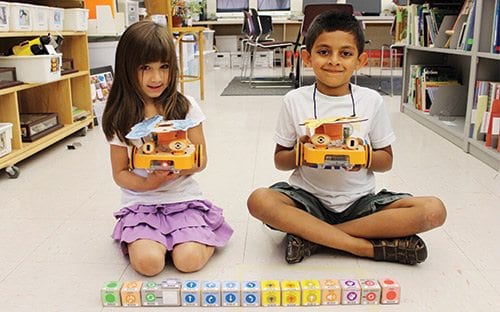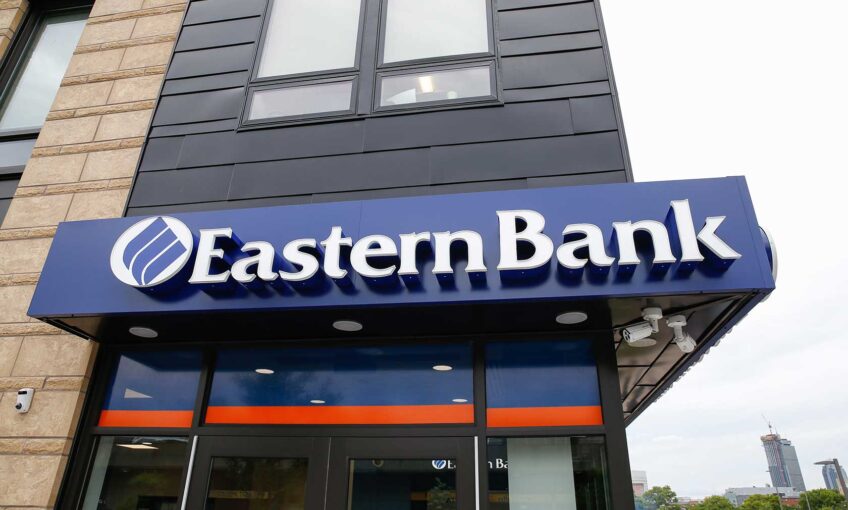
A Massachusetts-based company has created a new way of engaging children as young as age four in technology. Interacting with small “KIBO” robots made by KinderLab Robotics, children can be miniature engineers, designers, artists, dancers, choreographers and writers, learning new ways of thinking as they program robots to dance salsa or race with other robots.
With KIBO, KinderLab Robotics is creating opportunities for young children to turn away from “screen time” and engage actively with STEM — science, technology, engineering and math. KIBO robots are sold to schools, to parents and grandparents, and to camps and museums. With sales topping $500,000 in 2015, the company is a game changer, creating a new market and social innovation with global appeal.

Author: Photo: Courtesy KinderLab RoboticsKIBO-18 Kit, including robot with wheels, sensor modules, programming blocks and parameter cards, and art platforms.
On the web
KIBO robots are sold to schools, parents and grandparents, and also camps and museums. http://kinderlabrobotics.com.
Using Robotics: http://kinderlabrobotics.com/kibo
Making STEM fun
KIBO is the brainchild of Dr. Marina Bers, a Tufts University professor and world-renowned expert in early childhood education. Typically, STEM subjects such as coding are introduced in middle school and high school, but by this time, many students already have a sense of their identity and may have internalized negative stereotypes about science and math. With a master’s degree in educational media from Boston University and a master of science and Ph.D. from MIT’s Media Lab, Bers sought to introduce STEM thinking to much younger children.
“Coding is the new literacy,” explains Bers.
KIBO introduces children to coding by bringing robots into the classroom and allowing children to program and decorate their robots in creative ways that suit their interests. The breakthrough is that Bers’ robots have taught kids to code even before they can read and write.
The setup is simple: the children use blocks to develop a sequence of actions that programs the robots. The robot has a scanner and sensors that can scan the blocks. Each KIBO robot even has an “ear” and “light bulb” that add life to the projects.
Company origins
KinderLab Robotics emerged from a conversation at a child’s birthday party in 2011 between Bers and a fellow parent, Mitch Rosenberg. Rosenberg had experience in successful robotics companies and could help make Bers’ prototype a commercial reality. He had worked at Kiva Systems, a robotics company which made robots that operate in warehouses. When Kiva was sold to Amazon, Rosenberg found himself in a position to help Bers start KinderLab, initially without needing a salary.
NSF grants pave the way
Bers and Rosenberg applied for Small Business Innovation Research grant from the National Science Foundation, and a modest Phase One grant award allowed them to launch the company. A Kickstarter campaign helped them create molds for the first generation of KIBO robots. By 2014, KIBO robots were selling to parents and grandparents for the holiday gift season. Subsequently, KinderLab Robotics received a Phase Two grant from NSF, five times larger than the first award.
A global presence
Today, KIBO robots are in use in 40 countries. This past year, Singapore commissioned KIBO robots for 10 percent of its kindergarten classrooms, for a total investment of $250,000. This initiative is part of Singapore’s strategy to make the country the world’s leader in technology careers. If this year-long program succeeds, the government of Singapore will outfit all of its kindergarten classrooms with robots.
Why teach coding?
Coding instruction for children is valuable for several reasons. First, coding teaches kids new ways to think and solve problems. Second, coding exposes children to STEM subjects, giving them early confidence about fields such as science and engineering. Third, playing with KIBO robots gives children an opportunity to express themselves creatively by decorating and programming their robot in their own ways. These benefits extend beyond the classroom.
What’s more, exposure to coding at an early age helps to prepare more children for careers in technology. According to co-founder Rosenberg, “In my experience, 95 percent of the applicants for jobs in technology are white males. It’s been challenging for companies to recruit women and people of color into technology fields, largely because there are not enough qualified candidates from those demographics.” Tools like KinderLab robots can be introduced between the ages of four and seven, when the brain is still a “tabula rasa.” At this stage, children are open to trying new things and stereotypes have not yet become internalized.
What’s next for KinderLab Robotics?
KinderLab Robotics now is seeking new investment to scale up sales, marketing and manufacturing. The National Science Foundation has offered a 50 percent match for any new funds invested in KinderLab, up to $500,000, between now and next year. The company is looking to attract $1 million in new investment.






